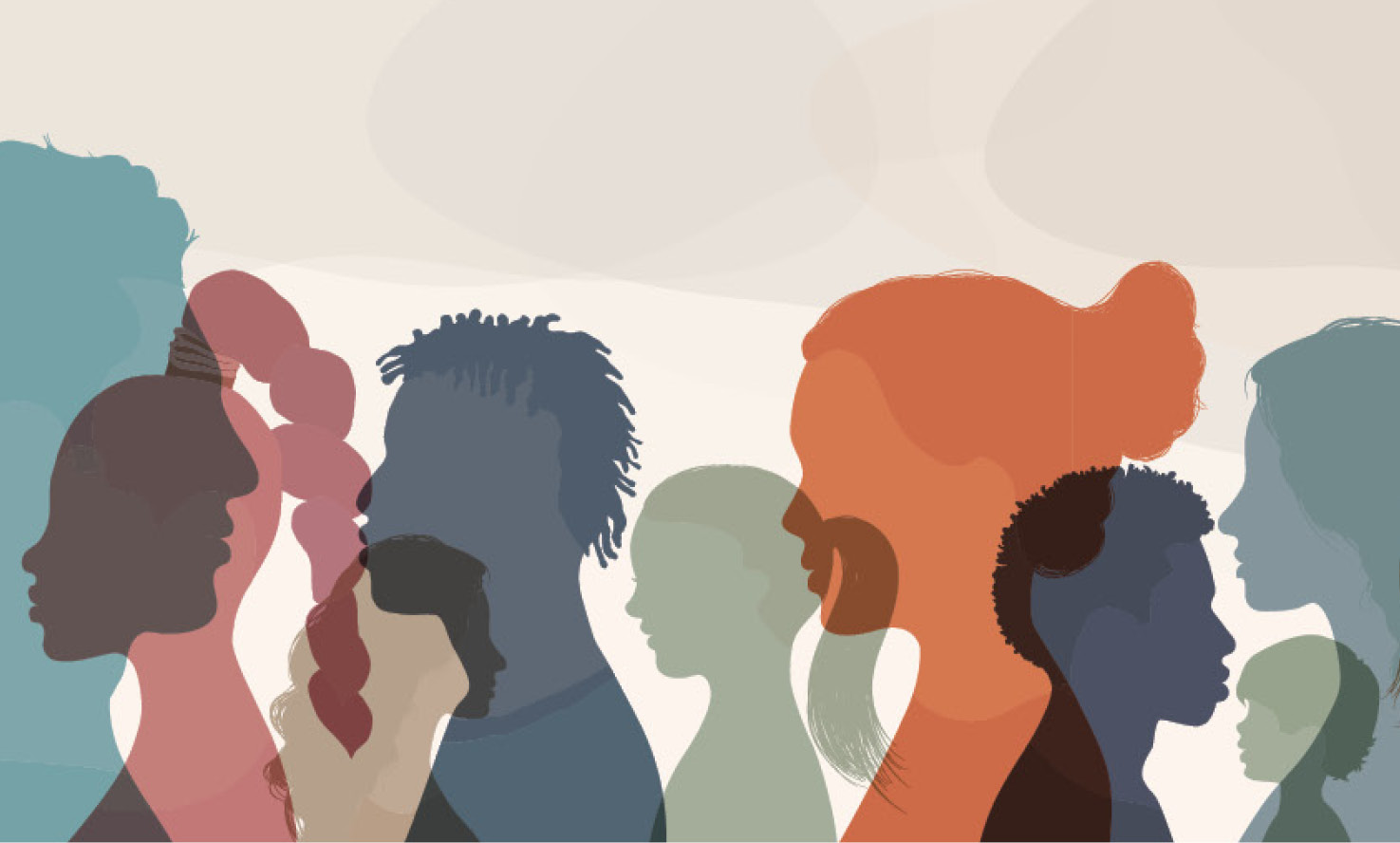Health Topics

Teens are talking about mental health
High schoolers' stories give a glimpse into the national crisis
The prevalence of mental health issues is hard to measure, but federal data show how widespread the challenges are. The Centers for Disease Control and Prevention (CDC) said we need to address threats to mental health in young people—especially adolescents.
More than one third (37%) of high schoolers in the United States reported experiencing poor mental health during the COVID-19 pandemic, according to a 2021 CDC study. Almost half (44%) of high schoolers reported feeling persistently sad or hopeless in the last year. Some of these feelings were also linked to experiences of racism, social stigma around gender and sexual identity, and sexual violence.
Studies like these can help shed light on issues that teens may be hesitant or unable to discuss with parents, doctors, and school staff.
Stigma and a lack of information or access to care also keep many teens from getting help. But sharing personal stories about mental health can offer encouragement and connection. This can help teens feel like they are not alone. That’s why NIH asked high schoolers to describe these challenges in their own words for the 2022 Speaking Up About Mental Health! essay contest.
The contest was sponsored by the National Institute of Mental Health (NIMH), the National Institute on Minority Health and Health Disparities (NIMHD), and the Eunice Kennedy Shriver National Institute of Child Health and Human Development (NICHD). They wanted to start conversations around youth mental health and highlight different aspects of this national health crisis.
In their essays, many students talked about feeling lost, embarrassed, or frustrated by their mental health struggles. Others wrote about going from being confident in early childhood to feeling alone or unseen in adolescence.
NIH-funded researcher Tamar Mendelson, M.A., Ph.D., Bloomberg Professor of American Health and Director for the Center for Adolescent Health at the Johns Hopkins Bloomberg School of Public Health, says that’s not surprising. Depression rates tend to increase around puberty, especially among girls but also in boys. Dr. Mendelson said this can be caused by a combination of hormonal changes, new social relationships, and new pressures from academic, athletic, and other activities.
“Young people who are feeling overwhelmed or are not sure how to cope with emotions may be more likely to use substances to kind of help with that,” Dr. Mendelson said. Such substances could include alcohol, tobacco, or prescription or illicit drugs, for example.
Puberty is also when many young people become more aware of their sexual orientations and gender identities. For some, this can lead to being unaccepted or bullied. Rates of substance use and misuse also tend to increase during puberty.
In addition to navigating the typical stressors that teens face, more recently they also had to cope with the COVID-19 pandemic and related family losses or financial struggles. They’ve experienced or witnessed racial- and identity-based discrimination, gun violence, political unrest, natural disasters, and climate change. These challenges coupled with other risk factors, including some parenting styles, can lead to mental health issues such as anxiety and depression.
Even though environmental triggers have changed over time, adolescent anxiety was rising even before the pandemic.
Michele Ybarra, Ph.D., an adjunct professor of mental health at the Johns Hopkins Bloomberg School of Public Health and also an NIH-supported researcher, said that not long ago, it was widely believed that youth could not have depression because people thought, “What do [they] have to be depressed about?”
But in the last several decades, Dr. Ybarra said, mental health professionals have realized that depression can happen to anyone at any age.
Several students wrote about schools with limited, outdated, or no education on the topic. Some said they could not speak to a therapist or school counselor when they needed to.
The issue is worse for students in rural areas, in schools with limited financial resources, or who need culturally appropriate care such as bilingual mental health information.
But digital tools can connect youth to information about their mental health. For example, Dr. Ybarra said, the rise of telehealth and teletherapy since the pandemic has helped increase access for some.
Dr. Ybarra said that while technology (including social media) can have both positive and negative effects on mental health, it can also be a force for good. The nature of relationships has changed in the internet age, and connecting online is natural for adolescents. Options like crisis lines or online therapy can get help to teens quickly.
Multiple students said when they could not find resources from their schools or communities, they started their own. Some also said their experiences have inspired them to study mental health and treatments after high school.
One student said they began volunteering for a teen crisis hotline after their cousin used the same service for help. The student also joined a youth advisory group for their state governor’s office and offered help as a peer-to-peer counselor at their school.
“My passion towards becoming a researcher on psychiatric disorders is stronger than ever,” they wrote.
The way people talk about mental illness could also be better, one student wrote. They preferred the phrase “living” with a mental illness rather than “suffering” from one. This small change in language signals it’s possible for people with such conditions to live happy and fulfilling lives. This student also said their own school began marking mental health-related absences as excused and holding an annual mental health week to encourage open conversation.
It’s too early to tell what the long-term effects of the past few years will have on youth mental health. But Dr. Ybarra said some teens have become more resilient since the pandemic began.
“I don’t think this generation is doomed in any way,” she said. “Several kids have said [the pandemic] really gave them the time to better understand themselves, they better understand their sexuality … Other kids took on new hobbies, and they learned how to do new things. Maybe they gave themselves permission to not talk to that toxic person in their lives.” While there’s no denying the pandemic has been a stressful experience, Dr. Ybarra’s impression is that most teens have come out the other side with perspective and an ability to thrive.
“This is good news. It also means that we need to be diligent about identifying teens who continue to struggle and connect them to services,” she said.
If you think a teen is experiencing a mental health crisis, the 988 Suicide and Crisis Lifeline is a national, 24/7 hotline that can connect you with a trained crisis counselor by phone or online chat. Call or text 988 to connect to a trained crisis counselor 24/7 or use the live online chat option. TTY users can contact the Lifeline via their preferred relay service or by dialing 711, then 988.
By the numbers
According to the Centers for Disease Control and Prevention, in 2021:
- 36% of high school students perceived or experienced racism before or during the pandemic
- Asian (non-Hispanic): 64%
- Black (non-Hispanic): 55%
- Multiracial (non-Hispanic): 55%
- Hispanic or Latino: 42%
- American Indian/Alaska Native (non-Hispanic): 27%
- Native Hawaiian/Pacific Islander (non-Hispanic): 55%
- White (non-Hispanic): 23%
- 18% of female high schoolers and 5% of male high schoolers experienced sexual violence, up from 15% and 4%, respectively, in 2017
- 57% of female high schoolers and 29% of male high schoolers had persistent feelings of sadness or hopelessness
- Up from 41% and 21%, respectively, in 2017
- 69% of lesbian, gay, bisexual, and questioning (LGBQ+) high schoolers* and 35% of heterosexual students had persistent feelings of sadness or hopelessness
- 14% of LGBQ+ high schoolers and 7% of heterosexual students did not go to school because of safety concerns
*Data set did not account for gender identity, although previous research has shown that transgender youth experience more stigma and are more likely to have more suicidal thoughts or behaviors compared to their peers.
NIH-supported research on adolescent mental health
Greater Engagement in Gender-Sexuality Alliances (GSAs) and GSA Characteristics Predict Youth Empowerment and Reduced Mental Health Concerns
This study, supported by NIMHD, focused on the connections between sexual and gender minority youth’s involvement in extracurricular activities and their mental health. Researchers focused on gender-sexuality alliances (also sometimes called gay-straight alliances), which are school-based clubs to bring young people together to discuss shared issues or interests. Learn more about this study.
Understanding Bystanders for Self-Directed Violence Prevention: A Prospective National Study Highlighting Marginalized Youth and Young Adults
Self-directed violence refers to anything a person does intentionally that can cause injury or death to themselves. This study will examine the effectiveness of programs that train youth to be “active bystanders” and help those in danger of self-directed violence. Researchers will survey approximately 5,000 participants ages 13 to 22, recruited via social media, about the impacts of these bystander training programs in real-world situations. Read more about this study.
Strategic Framework for Addressing Youth Mental Health Disparities
This plan outlines research studies and other activities by NIMH, NICHD, and NIMHD to reduce mental health disparities among underserved and underrepresented youth by 2031. Some of the plan’s goals are to develop culturally appropriate mental health interventions for youth and parents and to research co-occurring mental illness among young people in groups that have been marginalized. Read more about the framework.










